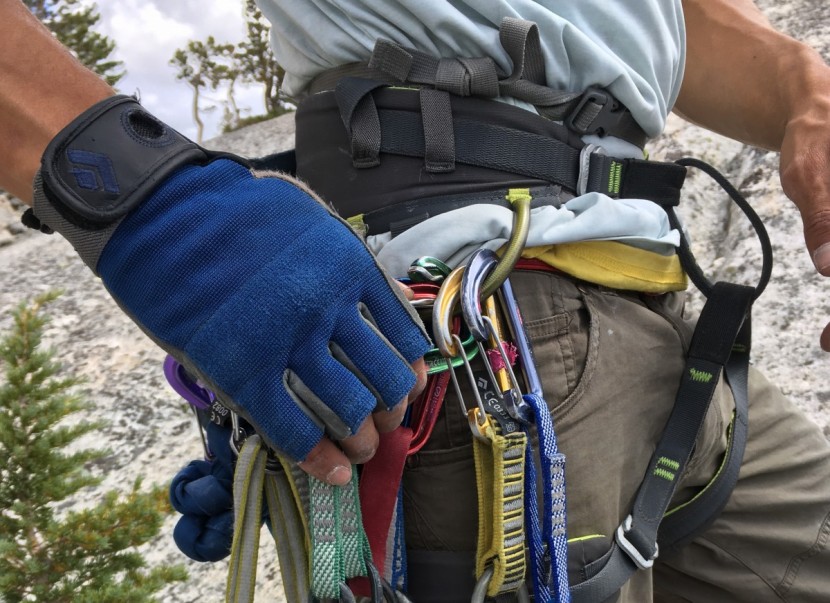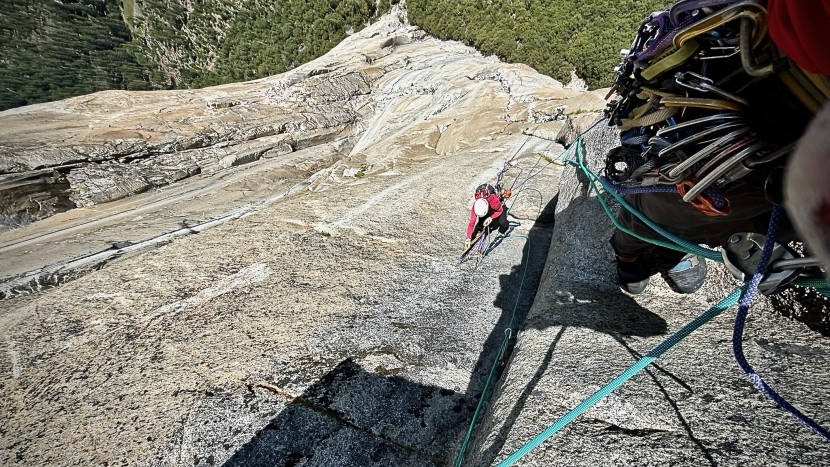In order to properly assess each individual climbing glove, our testing team spread out near and far. While the majority of our testing occurred in Yosemite National Park, we also took to local crags and other big wall locations to assess the overall durability when it came to more abrasive rock types such as sandstone and volcanic tuft. We determined four key testing metrics that included rope handling protection, dexterity, durability, and aid climbing performance. After countless hours of testing each individual pair side by side, we hope that our results inform your decision when considering your next pair of climbing gloves.
Rope Handling Protection
We tested each pair of glove individually so that we could objectively compare the gloves side by side. In order to assess rope handling protection, we set up a fixed line and made repeated descents to determine whether or not the glove successfully protected our hands from the static line. We also spent countless hours belaying in order to make an informed decision on whether or not the gloves provided enough protection while belaying. After an extended testing period of multiple rappels, belays, and rope coiling contests, we awarded the gloves that provided the most protection with the highest marks.
Dexterity
Rope handling protection doesn't mean a thing if you can't move your fingers when wearing a stiff or ill-sized climbing glove. For this metric, we spent countless hours belaying our partners both at the gym and our favorite crag in order to determine the overall dexterity of the glove. Furthermore, we put on each pair of gloves before organizing our bin of climbing equipment to evaluate how each glove performed when it came to picking up various items such as carabiners, pitons, belay devices, slings, and more. While leather climbing gloves often provide the most durability, they can also be somewhat stiff and limiting when it comes to dexterity. For maximum dexterity, we recommend half-finger options that provide protection for most of your hands through the knuckle yet leave your fingertips exposed.
Durability
After multiple days of use at our local crags and after big days in the mountains, we evaluated the overall wear and tear of each pair of climbing gloves. We quickly discovered a trend among the gloves that we tested. Leather gloves are by far more durable than their synthetic counterparts, however, the synthetic gloves often provided the best breathability, though we would not recommend them for more than a single pitch rappel as the thin material is not durable enough to protect your hands from the friction of the rope. The gloves that withstood abuse better than the rest and showed the highest likelihood of multi-season performance were awarded the highest marks within the testing metrics.
Aid Climbing
For this metric, we took the climbing gloves to our favorite and most objective testing ground, Yosemite Valley, California. After multiple routes on both El Capitan and Half Dome, our testers had a pretty good idea of the gloves that offered the best performance. As you might have already guessed, the half finger options were the preferred glove as the majority of your hand and especially your knuckles remain protected while your fingertips are exposed for maximum dexterity for everything from placing finicky protection to hauling your bags up the exposed rock face.



